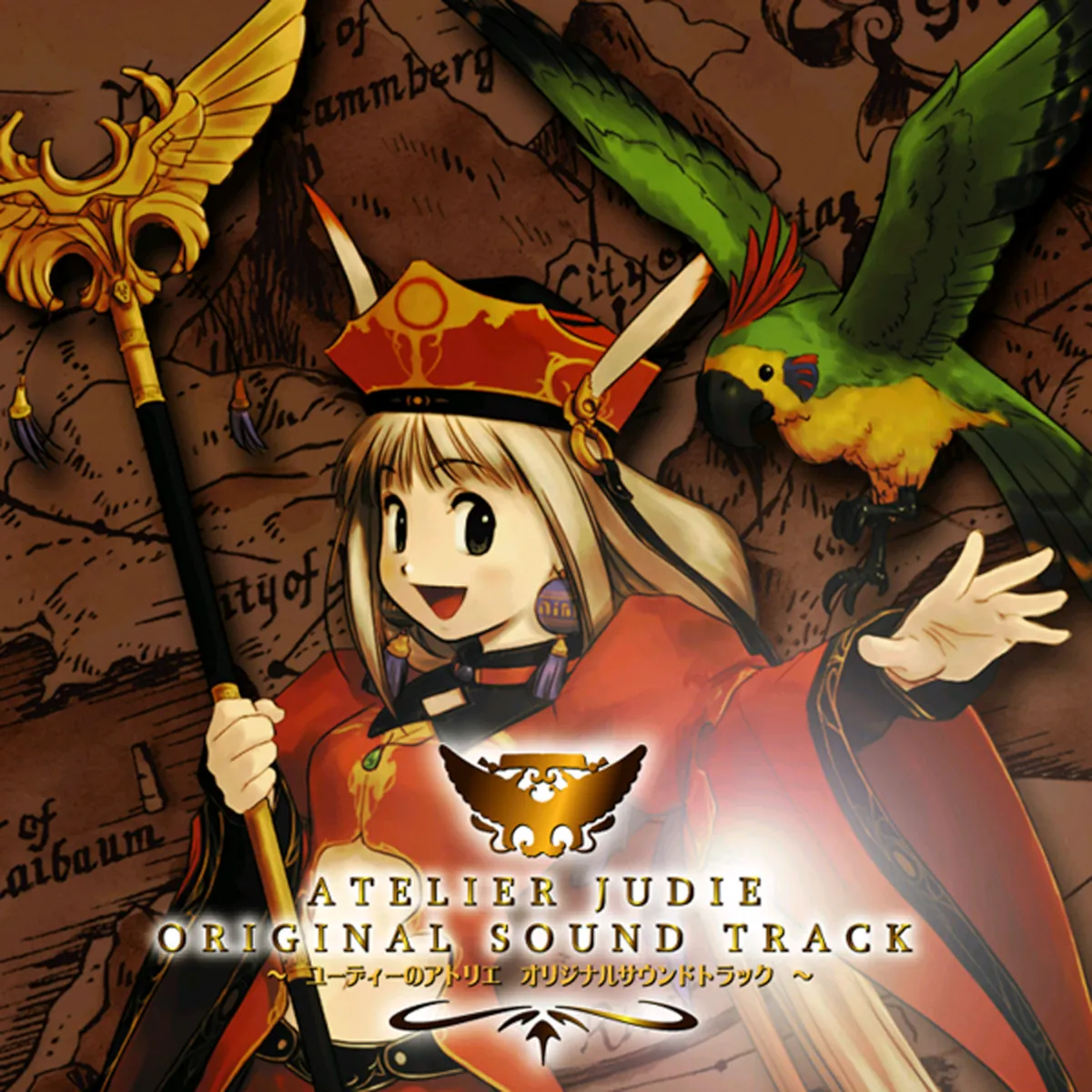Atelier Judie (pronounced “You – Dee”, with a soft Germanic “J”) is the fourth game in Gust’s Atelier series, the first in the two-part “Gramnad” sub-series. Featuring music from series veteran Akira Tsuchiya (primarily on disc one) and two Kobayashis for the rest, Judie has a lot to offer.
This two disc set of music opens with a beautiful piece, reminiscent of other Atelier opening songs (similar chord progressions, similar female non-lyrical vocals). This particular opening song has a Mediterranean flavor to it, as does the next track, “Country of Bonfires.” We’re already beginning to learn what, exactly, the world of Atelier Judie looks (or really, sounds) like.
From here, we are treated to plenty of songs that use the traditional instruments you ought to be used to hearing in any Atelier soundtrack: lots of mallet percussion, auxiliary percussion (wood blocks, castanets, that sort of thing), high-pitched woodwinds, accordions, and “ooh/ahh” vocal synths. Many songs are in a medium-to-fast-paced 6/8, creating the feeling that you are either dancing or floating.
There are many songs, especially on the first disc (composed primarily by Tsuchiya), that I would love for you to hear. One notable track I enjoyed was “Karack Credit Company.” The bouncy rhythms are back on this one, with an acid-clavinova/piano sound carrying various solos, as well as a catchy rhythm guitar part and lots of light percussion to go around. “Ocean’s Cocktail” uses standard jazz chords to carry a non-traditional jazz melody on a non-traditional jazz instrument to create an energetic whirl of music that you would be hard-pressed to find on most VGM soundtracks.
“Twilight Blue,” the standard battle theme, does not measure up to battle themes of later Atelier games (such as Atelier Iris), but it stands firm on its own against competitors from Elie and Lilie. The melody, and the harmony that follows it, is what I see to be this particular battle theme’s strong point.
The “Epos” tracks are 20 second tracks sung by Miki Takahashi that tell some short tale or lesson about nature: they have a particular context for the game, but they are neat to have on the OST. After these songs are done, we end disc one with Takahashi’s “Elle Gramnad,” a flowing vocal track with a familiar melody in the chorus.
Disc two is composed almost entirely by the Kobayashis, and the difference is notable. Some songs are still quite good. I noticed that, in general, different sounds are chosen for these songs; they have a more moody feel, much more like a videogame and less like a cartoon. “The Loanshark” is another “honorable mention” in my book. “Insatiable Curiosity” is likely a dungeon theme, and it has all the components required to make for an “interesting” but not “scary” dungeon. It is unfortunate that many of the tracks on disc two amount to “filler songs,” as I would have appreciated having more substantial tracks.
The disc ends with two songs that are sung by Saeko Chiba: they are actually both the same song musically, with the only difference being the lyrics sung. I suppose that there is some significance to this choice; otherwise, the sound staff must have just gotten lazy. “We have lyrics for two songs, but only one song composed, what do we do?” I’m sure that’s not what really happened, but it gave me a good laugh to imagine that scenario.
There are enough outstanding tracks on this OST to warrant a good 15-track arranged album, but considering that will never happen, I would ask that you just go ahead and pick up this OST. It has quickly become one of my favorite Atelier soundtracks (my favorite non-Iris Atelier soundtrack, actually!). It is available for purchase directly from Gust’s site for 3000 yen, and hopefully someday Team Entertainment will make a reprint that increases the soundtrack’s availability.




